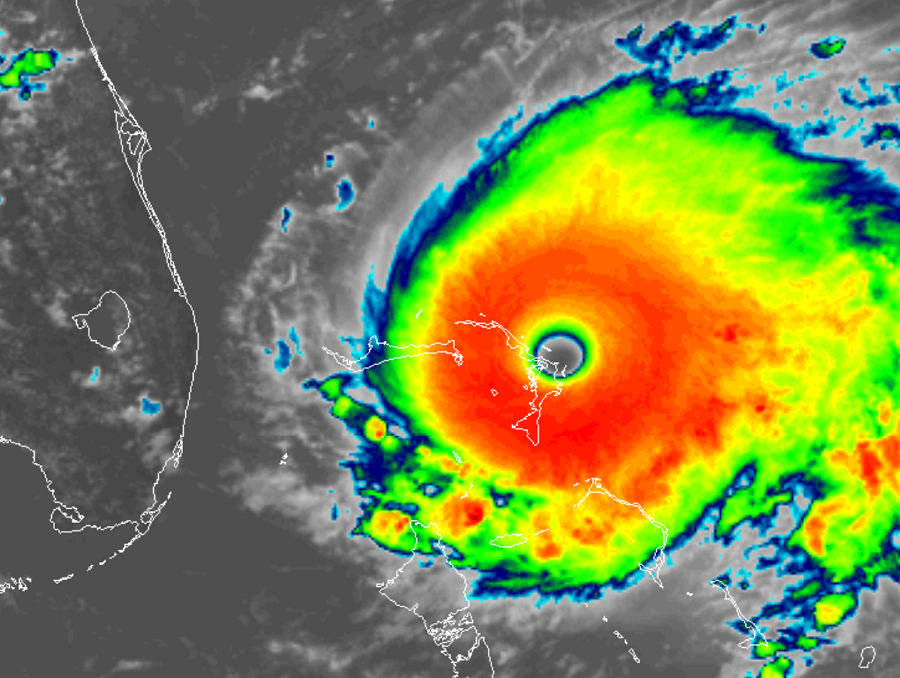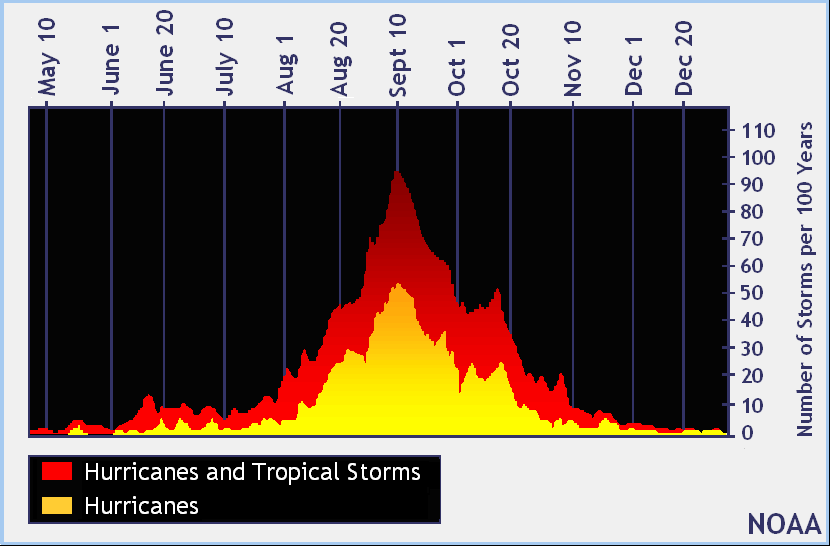
Experts at Colorado State University’s Tropical Meteorology Project have updated their seasonal outlook for the 2020 Atlantic Hurricane Season once again to include even more storms than before. They now are calling for an extremely active season, with a total of 24 named storms, 12 hurricanes, and 5 major hurricanes. This update includes the 9 named storms and 2 hurricanes that have already formed. The full report is available on this link: https://tropical.colostate.edu/Forecast/2020-08.pdf
The update by Colorado State University’s Tropical Meteorology Project is significant. The new forecast boosts the expected number of total named storms even higher than earlier outlooks, up from 16 first seasonal outlook released in April , 19 in the update issued in June, and 20 in the July update.
The outlook endeavor at CSU is led by Research Scientist Dr. Phil Klotzbach. He received his Ph.D. in Atmospheric Science from CSU in 2007. Klotzbach has been employed in the Department of Atmospheric Science for the past nineteen years and was co-author on the Atlantic basin hurricane forecasts with Dr. William Gray through 2005. He became first author on the seasonal hurricane forecasts in 2006. Klotzbach developed the two-week forecasts currently being issued during the peak months of the hurricane season between August-October. He has published over two dozen articles in peer-reviewed journals such as Journal of Climate and Weather and Forecasting.
If the forecast verifies, the Atlantic will run out of storm names to use. The list of names are maintained by the United Nation’s World Meteorological Organization (WMO). Currently, only tropical cyclones are named in an official capacity; winter storms are not. The World Meteorological Organization from the United Nations develops a list of names for each ocean basin. In the United States, the National Hurricane Center maintains lists from the WMO for Atlantic Basin and eastern Pacific basin storms. Storms that form near Hawaii come from a list managed by the Central Pacific Hurricane Center.
Storms are named in alphabetical order each season. “It is important to note that tropical cyclones/hurricanes are named neither after any particular person, nor with any preference in alphabetical sequence,” states the WMO. “The tropical cyclone/hurricane names selected are those that are familiar to the people in each region.”
With only 21 names available, a forecast of 24 will exceed that by three. In the event that more than twenty-one named tropical cyclones occur in the Atlantic basin in a season, additional storms will take names from the Greek alphabet. This means the excess storms would be named Alpha, Beta, and Gamma. Should additional storm names be needed, they would be called Delta, Epsilon, Zeta, and Eta. In 2005, the season that produced epic hurricanes Katrina, Rita, and Wilma, the list of names was also exhausted and names through Zeta were used.
The 2020 Atlantic Season is already a record-breaking one with 9 tropical storms forming before August 9. The season, which runs June – November, kicked-off early in May with the birth of Arthur and Bertha on May 16 and 27 respectively. In July, additional storms formed, including Hanna which struck Texas as a hurricane and Fay which struck New Jersey as a tropical storm. In July, Isaias also formed, impacting the U.S. East Coast just this week.
To date, the season has produced 10 depressions, 9 tropical storms, 2 hurricanes, but no major hurricanes. A major hurricane is a Category 3 or greater storm. If the CSU outlook comes to fruition, 5 more major hurricanes will form this season.

The peak of hurricane season is usually a month from now. Even with a very busy hurricane season that has produced the earliest storms on record, it appears it will get worse with not only more storms, but stronger ones too. While death and damage tolls continue to come in from the U.S. East Coast from Hurricane Isaias, this year has already claimed 38 lives and created more than $1.7 billion in damages. The 2019 season killed 199 people and cost more than $12 billion in damages. With many more and more stronger storms projected, the 2019 numbers could be exceeded this year.